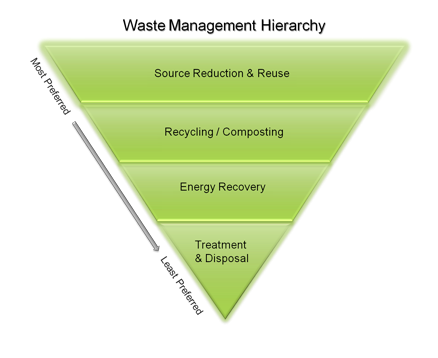
EPA
On average, Santa Feans throw away 5.5 pounds of trash per person every day in our landfill.
That might sound like its not possible, but we all contribute to the waste that comes from business, restaurants, and construction sites in our community. The Environmental Protection Agency (EPA) estimates the national average is 4.4 pounds per person per day, meaning the waste of Santa Feans per day is higher than the national average!
How We All Can Help?
The most effective way to reduce waste is to not create it in the first place. Source reduction is something to help rethink our waste. This could be as simple as using rags to clean instead of paper towels. Sometimes reducing is not an option, so reusing your item is the next best step to prevent it from being landfilled forever.
You can help support reuse by asking yourself these three simple questions:
-
Does it still work or serve its purpose?
Click Here for Reuse Tips
-
Would someone else be able to use it?
Click Here for Waste Reduction Tips
-
If it’s broken, could I have it repaired?
Click Here for Tips on Repairing E-Waste
Also, see the Donation Center page to find the nearest place that will take your item for reuse.
What are the benefits?
Saves natural resources.
Waste is not just when consumers throw items away. Throughout the Life Cycle of a product from extraction of raw materials to transportation to processing and manufacturing facilities to manufacture and use waste is generated. Reusing items or making them with less material decreases waste dramatically. Ultimately, fewer materials will need to be recycled, combusted for energy, or landfilled. (EPA)
Reduces toxicity of waste.
Selecting nonhazardous or less hazardous items is another important component of source reduction. Using less hazardous alternatives for certain items (e.g., cleaning products and pesticides), sharing products that contain hazardous chemicals instead of throwing out leftovers, reading label directions carefully, and using the smallest amount necessary are ways to reduce waste toxicity. (EPA)
Reduces costs.
The benefits of preventing waste go beyond reducing reliance on other forms of waste disposal. Preventing waste also can mean economic savings for communities, businesses, organizations, and individual consumers. (EPA)
TIP: Close the Loop
“Closed loop” recycling is basically a production process in which post-consumer waste is collected, recycled and used to make new products. This process can be as simple as using recycled aluminum to make new cans, or as complicated as weaving reclaimed plastic bottles into polyester for clothing and other products.
For the closed loop system to function properly, consumers, recyclers and manufacturers must work together to reclaim valuable materials from our waste stream and use them to make new products.

